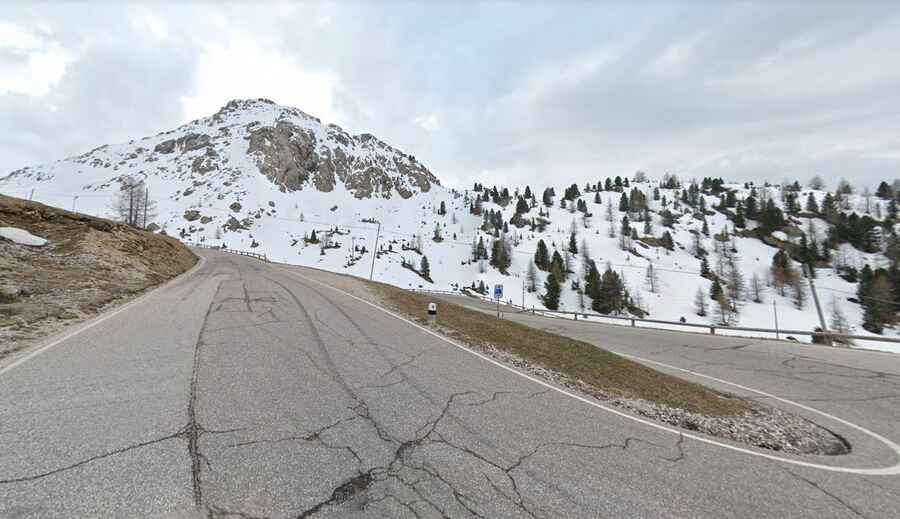Pordoi Pass is one of the highest roads of the Dolomites
Passo Pordoi is a high mountain pass at an elevation of 2.242m (7,355ft) above the sea level, located on the boundary of Trentino in the region Trentino-Alto Adige/Südtirol and the Province of Belluno in the region Veneto, in Italy.

Where is Pordoi Pass?
Set high in the Dolomites mountain range, in the Alps, between the Sella group in the north and the Marmolada group in the south, the road to the summit, also known as Pordoijoch, is totally paved. It’s called Strada Statale 48 (Strada Statale delle Dolomite).
How long is Pordoi Pass?
Tucked away on the northern part of the country, the pass is 15.6 km (9.69 miles) long, running east-west from Arabba to Canazei. It is one of the 4 passes of the Dolomites Road, built in the beginning of the 20th century to link Bolzano with Cortina, and encourage the development of tourism in the Ladin valleys.
Is Pordoi Pass challenging?
Built in 1904, the drive is pretty challenging, with 33 hairpin turns, and a 9.7% of maximum gradient through some of the ramps. The road is exposed and subject to wind. It's said to be the second highest surfaced road traversing a pass in the Dolomites, beyond Sella Pass.
Is Pordoi Pass open?
Access to the pass is typically open all year round, with the occasional closure in winters due to dangerous weather conditions. It’s closed to heavy vehicles in winters (November to April).
How long does it take to drive Pordoi Pass?
To drive the road without stopping will take most people between 30 and 40 minutes. The pass is a very touristic place, especially in summers. If you really need to visit the Dolomites in the months of July or August, then you need to ride across the Passo di Pordoi before 10:00am. Otherwise, you should choose the months of June or September. The pass has been featured in the Giro d’Italia race - as the Cima Coppi (the highest point of the race too). A memorial to Fausto Coppi stands at the summit of the pass. The pass has a long, rich history, including its role in several WWI battles.